Door opening is part of the interior, which is always in sight and is in daily use. Its registration affects the perception of space by residents and visitors. With exemplary decoration, a good impression of the room as a whole is created, and errors in the decoration of the input opening are able to reduce the efforts of the most famous interior designers.
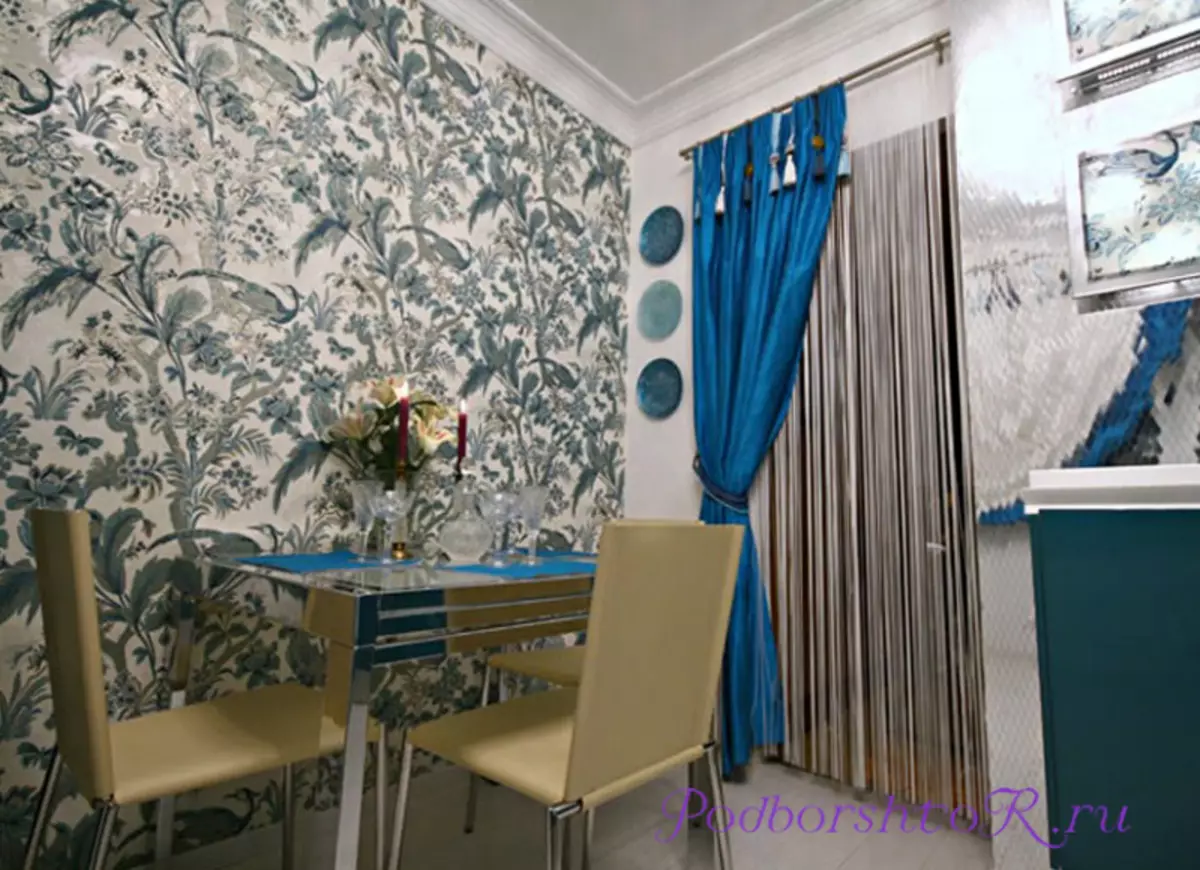
Decorated with curtain doorway
Doorway decor or arch: Basic rules
In the living rooms, halls, passing rooms are not always appropriate to install the door and completely isolate the room. Modern trend - zoning space without the use of unnecessary interior structures.
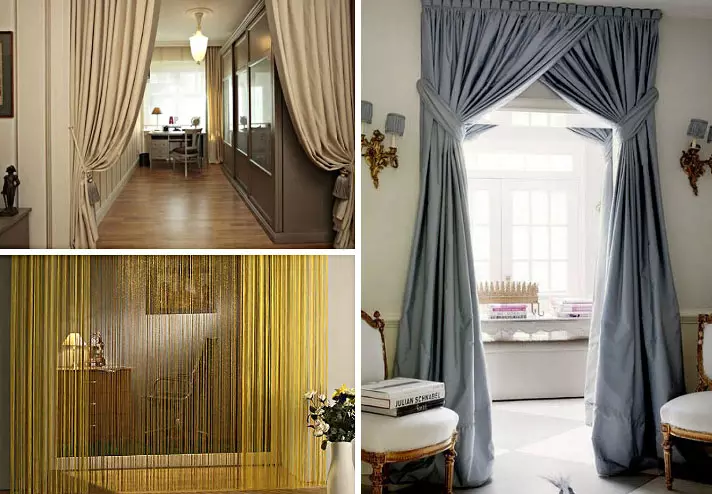
To make it competent, you should consider a few points:
- The size of the opening is wide it or narrow, low or high, what is the ratio of its area to the surface of the whole wall;
- The form is a rectangular cutout or arch;
- Material that is supposed to decorate entrance - textiles, wooden panels, polyurethane or plaster stucco, decorative stone, plastic panels.
The most common design method is the use of textiles and decoration of the doorway without a doors with curtains. They make it possible to distinguish between the premises and decorate the transition zone in the original.
The solution to close the doorway with the curtains is justified if it has a rectangular form - the standard option is acquiring an exclusive view. For mounting curtains on the doorway apply eaves. Fabric to it is attached with:
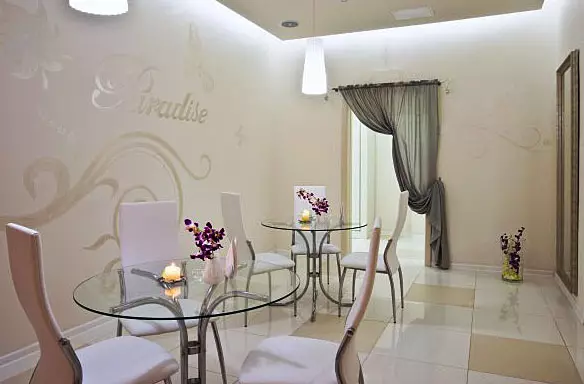
- loops and hooks;
- clothespins - ordinary "crocodiles" or magnetic;
- rings;
- Puverters - rings inserted into the fabric fabric;
- Kulisi - curd and stoley edge of the curtains, rod on the barbecue bar;
- strings.
The curtains in the arch between the rooms add to her sophistication, but for their attachment, the use of the rod cornice is not always appropriate, so they choose other installation techniques:
- Point loop holders, for which curtains on the arch;
- Special arcuate cornices.
The design of the doorway without a door with curtains begins with a selection of material: semi-synthetic, synthetic or natural tissues. They can be:
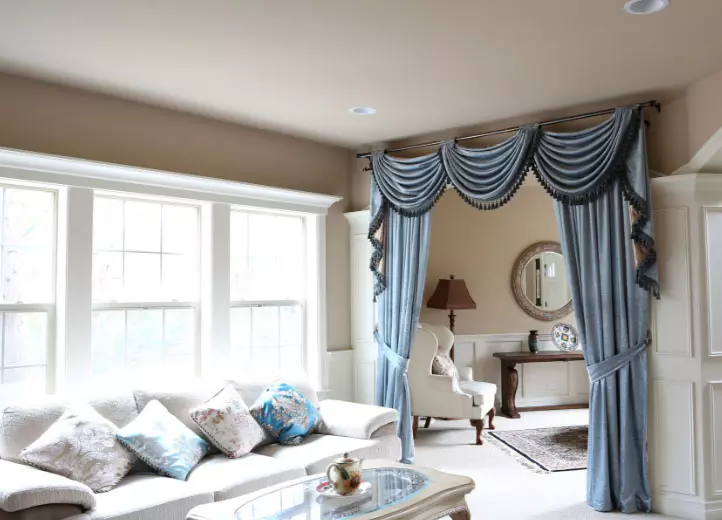
- vegetable origin - cotton, flax, jute, bamboo;
- animal - sheep wool, goat, camel and lamas, natural silk;
- Mineral - viscose, acetate, polyester, nylon, acrylic, Lurex, fiberglass, modal and others.
Depending on the owner's preferences, the style of the room, the illumination and temperature mode of the room - to make a curtain on the door can be made of light cotton or prefer heavy woolen porks with drapery.
Article on the topic: How do you build a house from foam in your own hands?
When buying fabrics, the percentage ratio of raw materials in its composition should be taken into account, to provide a possible shrinkage after washing, to ask the resistance of coloring substances. Combining fabrics in one product is carried out according to the rules - if the combination of the incompatible is not meant by the design intention, it is better to acquire a homogeneous material.

Council. The secret of the spectacular curtain lies not in the complication of the structure, but in the harmony of the proportions of simple models and the selected combination of colors. Stylish them makes the thoughtfulness of the details.
You can arrange a wide door opening one of three ways:
- Buy ready-made curtains;
- order their manufacture of a designer;
- Seam decorative curtains on the doorway do it yourself.
Master class on creating curtains on the opening with your own hands
Made independently curtains for the doorway without a door will delight for a long time, and creative work will deliver satisfaction. The process consists of several stages:
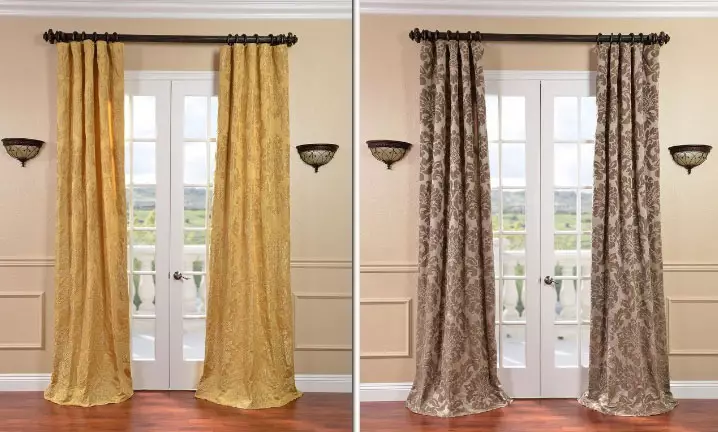
- Measurement of the doorway and the distance from the floor to the cornice.
For clarity, it is better to draw a general view of paper and put sizes.
- Choosing a suitable model of curtains in the doorway door.
It will simplify the task of the drawing of the opening of the open-scale scale and drawn sketch of the product with the details - lambrequins, swags, cascades or peroxides. If necessary, items can be added or deleted.
- Definitions of the tissue.
If in the sketch indicate the size of the opening, then the length of the details will be clearly visible. The width of the curtains on the door is determined by the width of the eaves multiplied by the assembly coefficient (the value indicating how many times it is necessary to take tissues to provide folds in the product). In medium density tissues, it is 2, in general can be from 1.8 to 3. For two porter, the width of the carnis is pre-divided by half and multiplied by the assembly coefficient. There is allowed letters to the seams, free hang, the need to process the kayma. In addition, take into account:
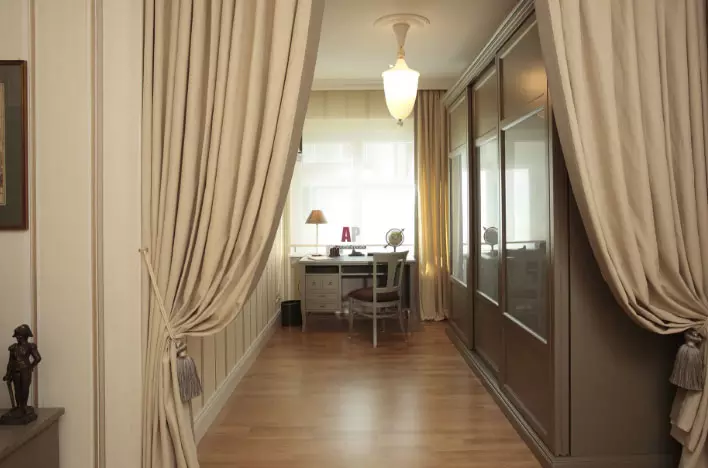
- Possible shrinkage of the material after washing - natural fabric "Sits" more synthetic;
- The number of decorative elements and techniques - for example, draping will require a double increase in the size of the width;
- The presence of a pattern on the fabric - may have to combine prints, for this, a minimum of 10% is added to the calculated amount of material.
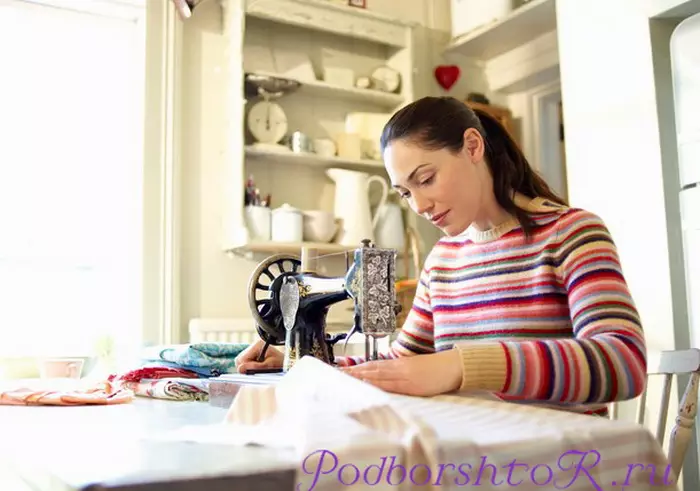
Tailoring with your own hands
In the presence of experience and abilities, they can be made independently, especially if the model is simple. The simplest solution is to find ready-made samples. Ordinary hanging curtains on the door are sewn without chosen.
- Preparation of necessary materials
Includes the purchase of fabrics and additional elements - braids, lining fabric, fringe, fliesline, oblique beaks and threads in tone.
- Preparation of fabric to the discollity consists of several steps:
- Prevent fabric shrinkage;
- Edge processing - removal of kayma;
- Preventing fibers.
Article on the topic: All about Lubricated doors: species, features, application
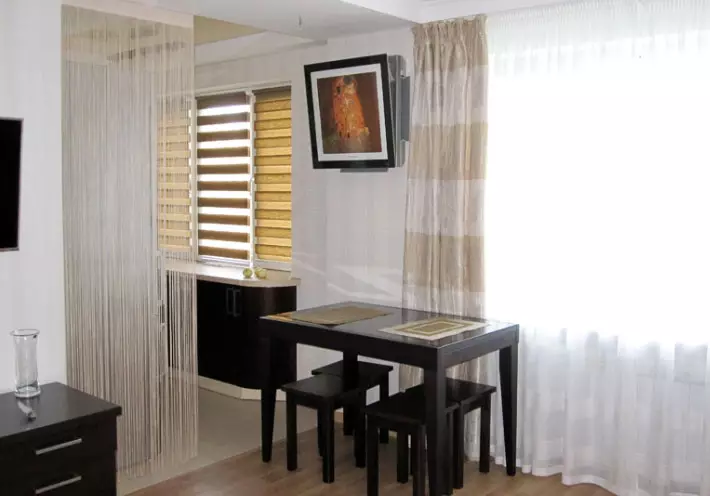
Acquired fabric is erased, dried and ironed before use. If this is not done, then after the first washing, the finished product "Sits" and will lose the form. Some types of fabrics are advisable to iron, without waiting for complete drying, it usually concerns natural materials - flax, cotton. After drying, they retain the "mint" shape and smooth them problematic. Before you begin to cut, check whether there are no blocks in the tissue formed during the washing and drying process.
The next step in the preparation of the fabric is the removal of the border (dense band along the edge of the tissue that prevents its rash). For its cuts, special fester scissors are used, whose blades have a zigzag edge. This prevents the tissue rash. With the same purpose, you can:

- use a special liquid or glue;
- to see a zigzag along the edge or use to handle overlock;
- Carefully melted - cover the edge using a lighter or candles.
- Cutting fabrics with letters on the seams.
Its specifics lies in the fit of the pattern. If the fabric is opaque, then the direction of the pattern (top - bottom) must be transferred to the wrong side. It should be coincided with the prints on two canvases of the porter - with a string on the wrong side, it is necessary to designate the drawing rapeport. Moreover, the pattern can be repeated both along and across, so two canvases need to cut down, retaining the total identity of the pattern.
The edges of the parts are processed in different ways:
- The cut is made closed (bends and passed);
- it can be seeded with a fringe;
- shelter oblique bay;
- From the back of the part, you can sunmore.
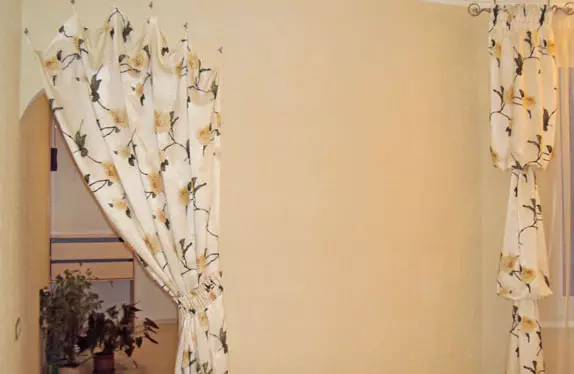
The finished curtain on the door with their own hands is hung on the cornice, pickups and other decorative elements are added.
Premise options homemade curtains
Types of curtains available for making with your own hands:
- rolled;
- tissue with decorative elements;
- bamboo;
- curtains - Visulki;
- Nutrition.
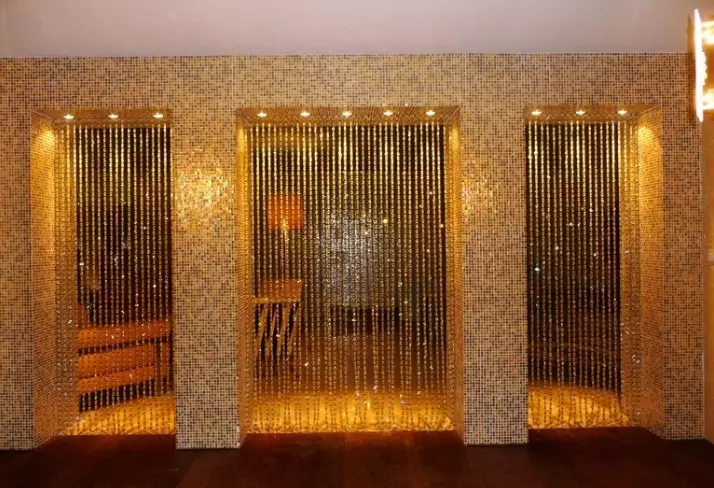
Bamboo curtains on the doorway are made from natural fibers, can be vertical or horizontal. Horizontal are more often installed on windows or glazed doors. Their canvas are composed of bamboo straw and rises with the help of threads, turning on the principle of rolled or Roman curtains. Vertical door curtains made of bamboo are strung on the fishing fragments of a bamboo barrel of a small diameter of 5-15 mm hanging from the cornice. They are:
- have an original look;
- easily move away;
- possess all the advantages of natural wood;
- antistatic;
- Possessed in care - wipes with a damp cloth or wash.
Article on the topic: How to make a transition frame for radio with their own hands
View video design
Bamboo curtains on the door can be natural golden color, dark or with alternating light and dark ruts. The bamboo curtains on the doorway are hanging on a decorative eaves, decorated in the form of a cane trunk. Make door curtains from bamboo or imitation under the bamboo is very simple:
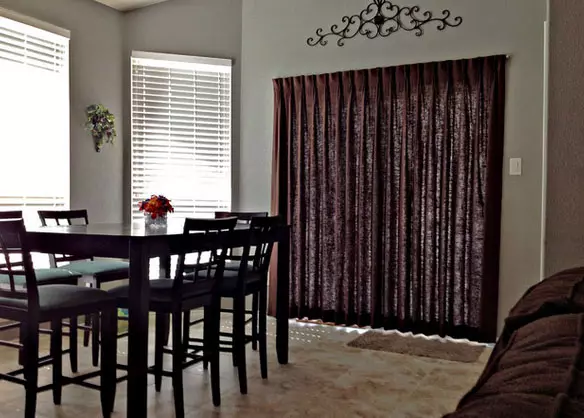
- cut the fishing slices in length from the eaves to the floor;
- Glue the fishing line (or durable thread) with one end on bilateral scotch, bend it, remove the paper and break again - for greater strength. The last bent sticky strip to attach fishing line to the decorative cornice barrel;
- dried stems cut into segments 20-25 cm long;
- ride fragments on the fishing line;
- Between segments, you can drive beads or short bamboo segments, painted in another color;
- Tie ends with a strong node. Curtains with a cornice hanging on the brackets.
In the absence of a natural bamboo, you can make curtains under bamboo with your own hands from plastic tubes or any suitable material. By the same principle, curtains - bobbers, dense, knitted and wicker options are made. You can make curtains on the arch in a similar way, adjusting the length of the rope elements.
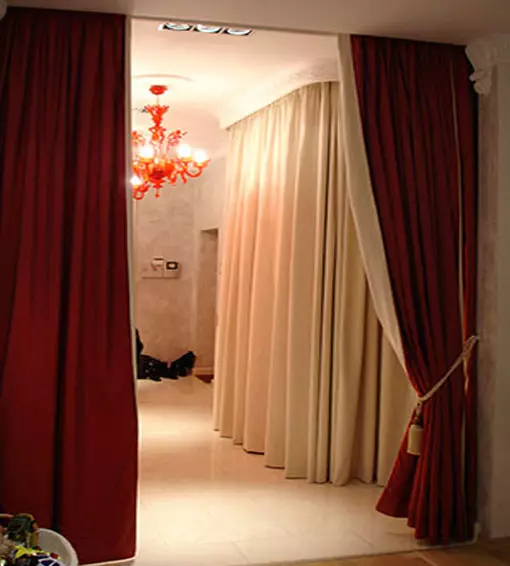
For decoration of arched recess, it is better to sew the center of the arch on the doorway. Patterns differ depending on which eaves are used - direct or arcuate rod. The easiest version of such a curtain is to cut the lower edge of the canvas with a semicircle and process. If the fabric has a decorative lower edge (like a tower web), then you can make a gentle cutout cutout, to handle it, sew the braid and hang the slot on the rod cornice. In this case, the top will stretch, and the bottom with a beautiful edge will take the shape of the arch. It is advisable to pre-make calculations or take advantage of the finished patterns.
The curtains for the door arch do it with their own hands not only on a straight or curved cornice, but also on the decorative point holders around the perimeter of the opening. In this case, the fabric will not move, so it is recommended to use light material - organza, nylon, collecting the side of pickups.
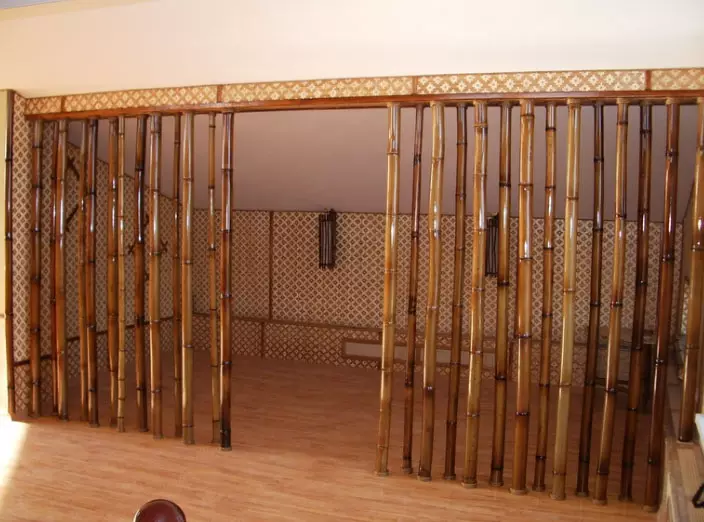
Rolled curtains on the doorway - the view of the blinds with a solid canvas (fabric, from bamboo or wooden plates). They open up with the help of a chain mechanism, are used more often on glazed doors. As an independent design, they are used if you need to isolate the room as replacement of doors.
Any kind of curtains can be sewed, assemble, mount and hang on your own, decoring the home to your liking.
